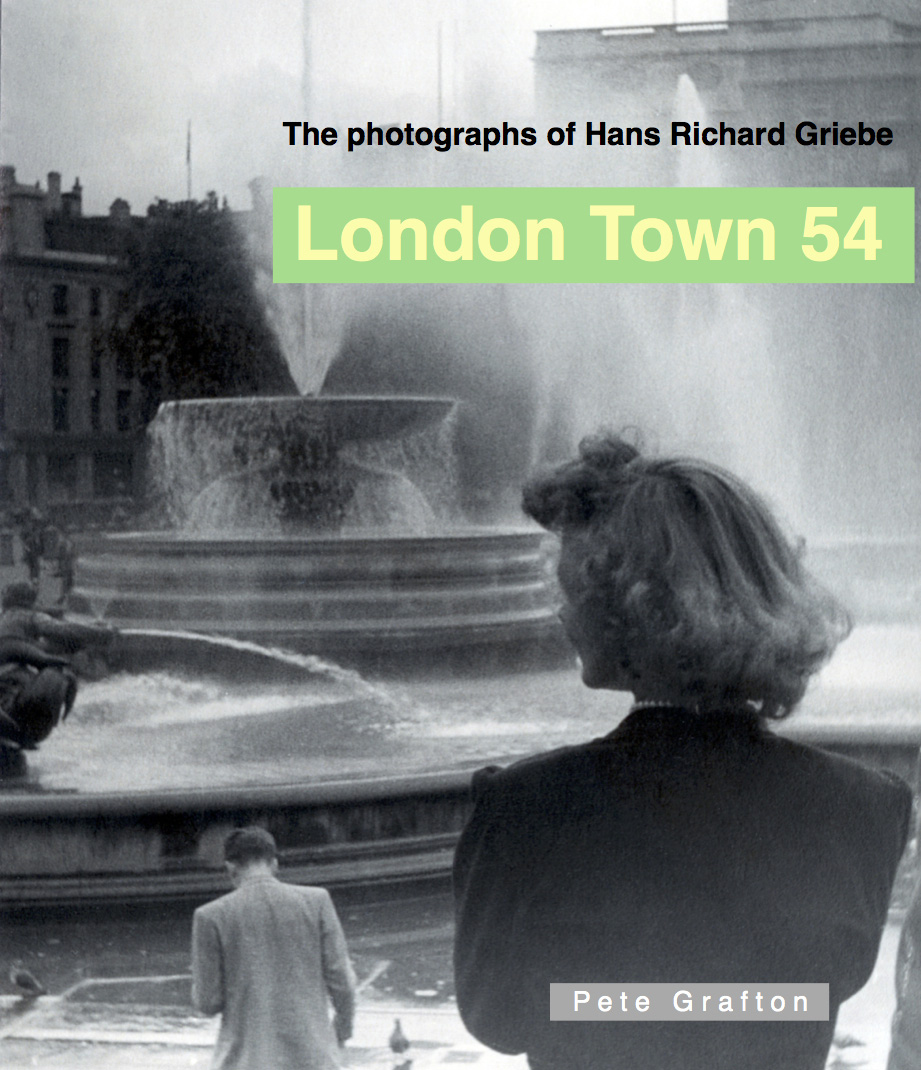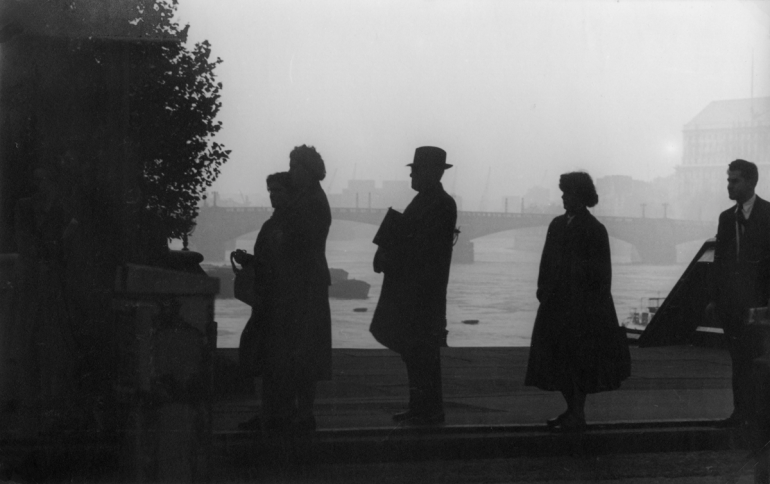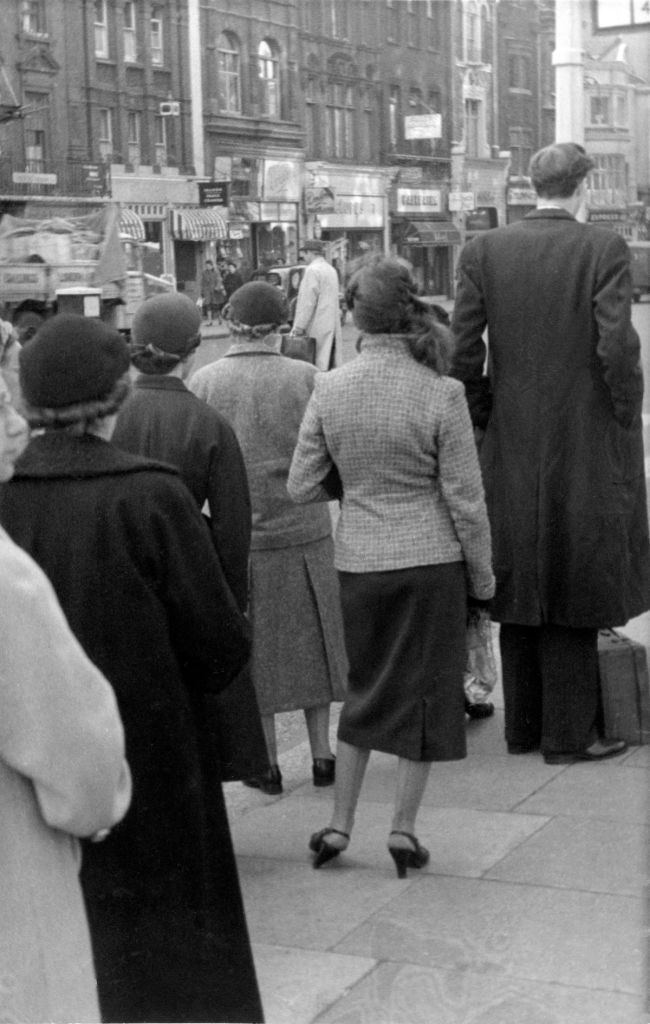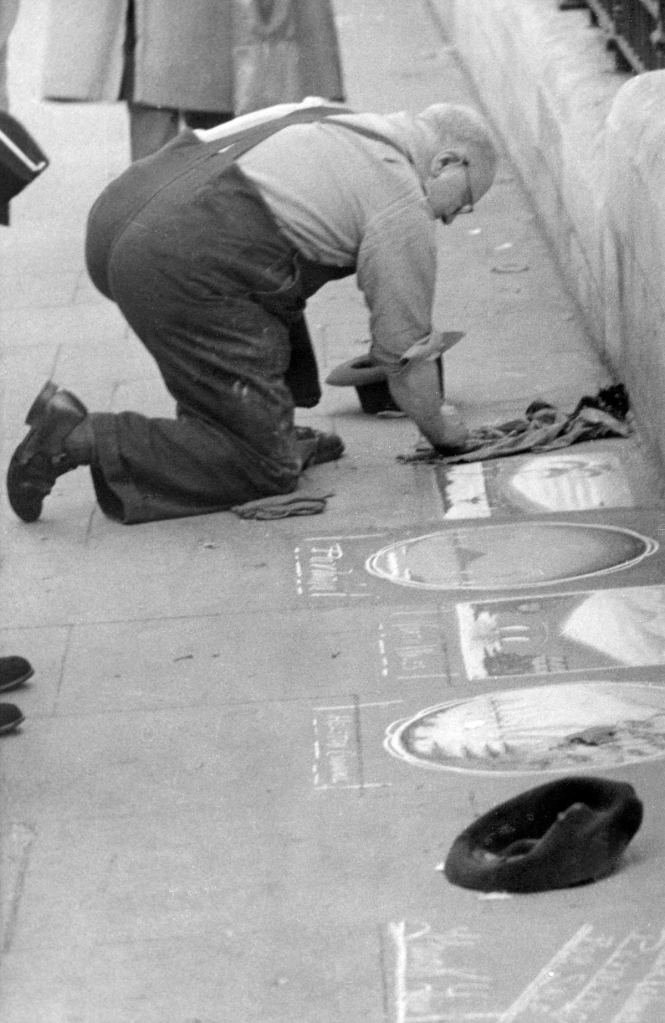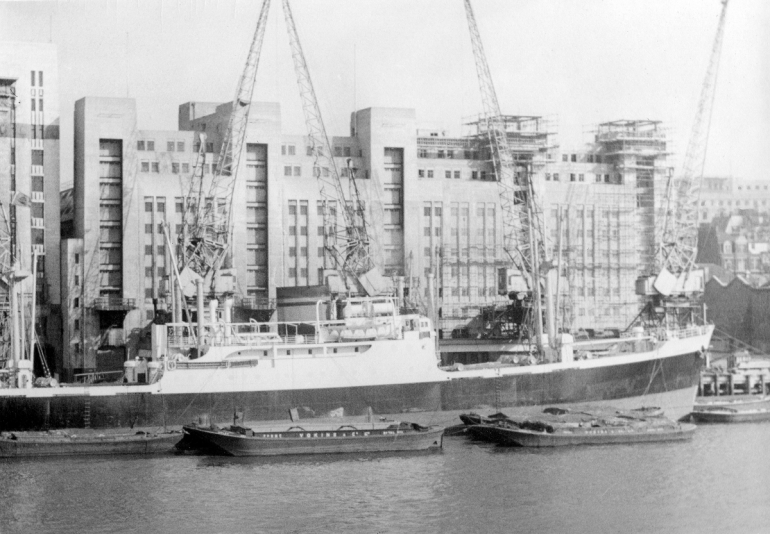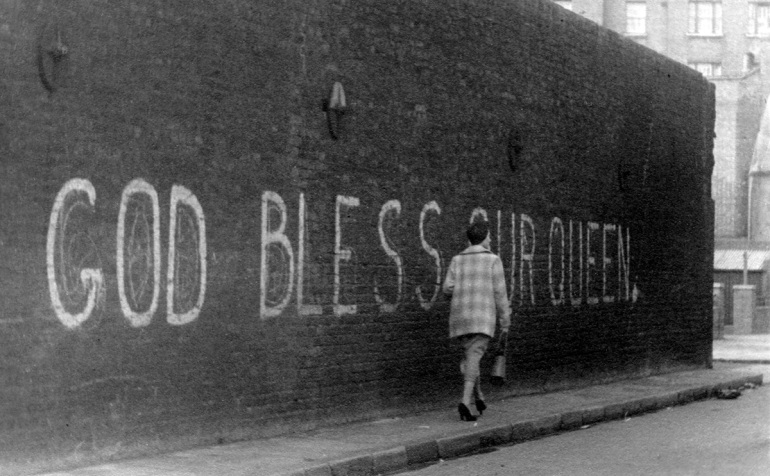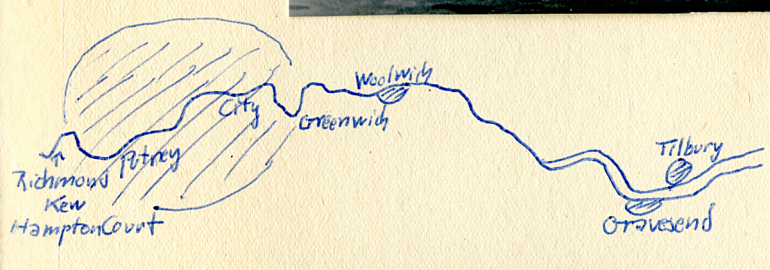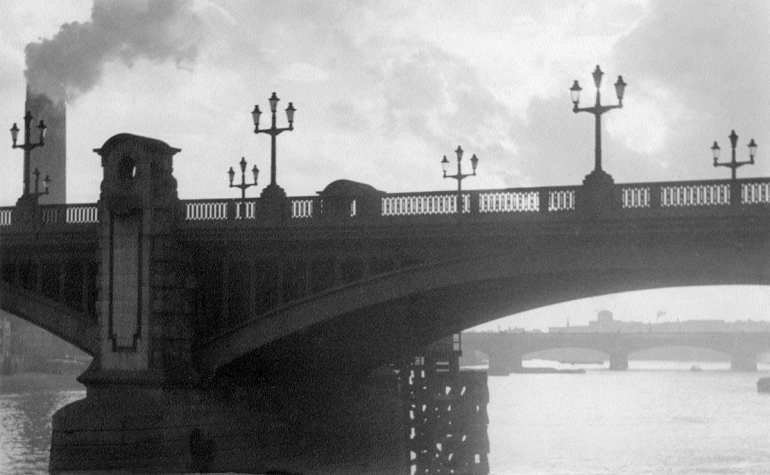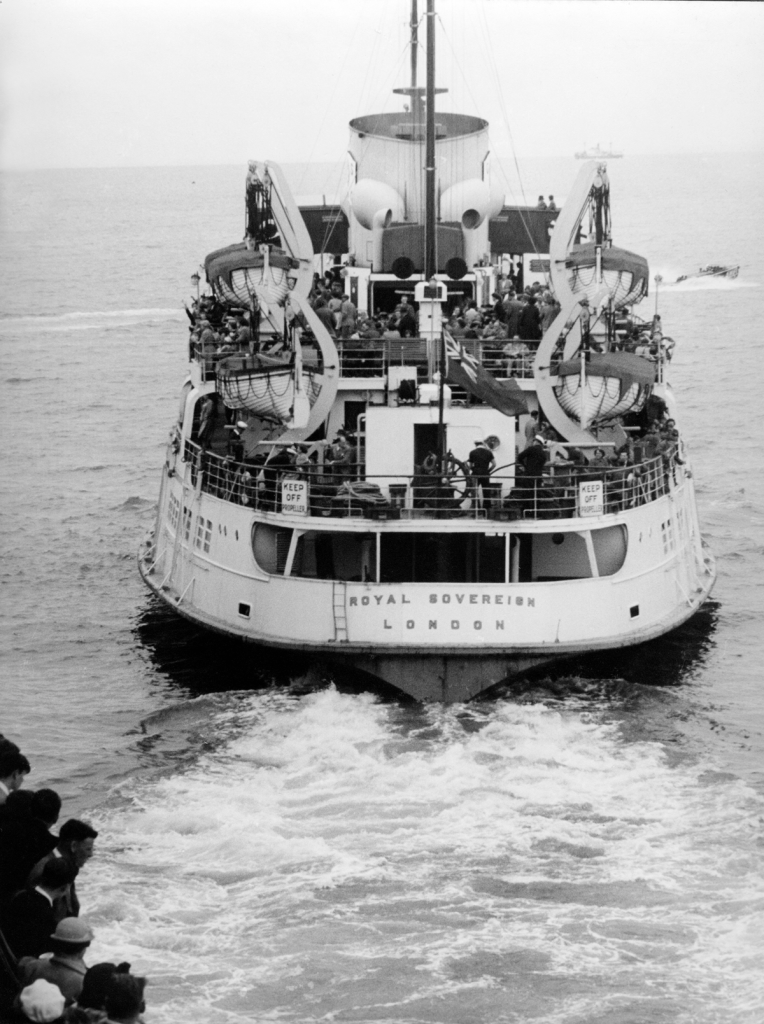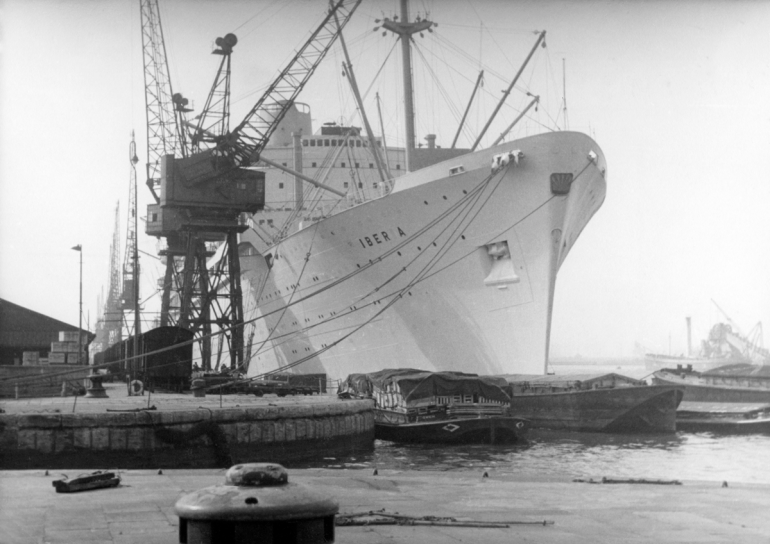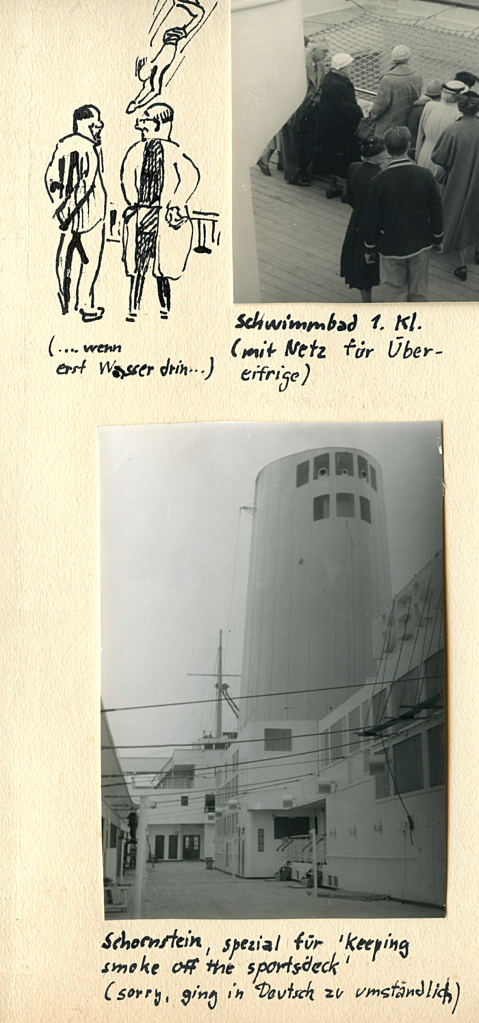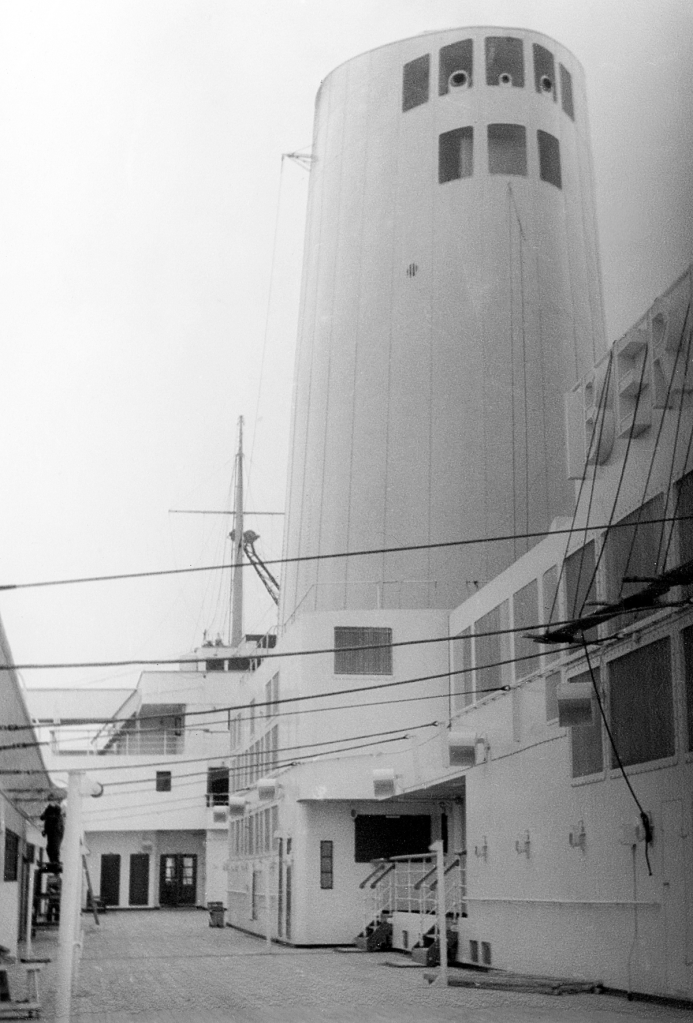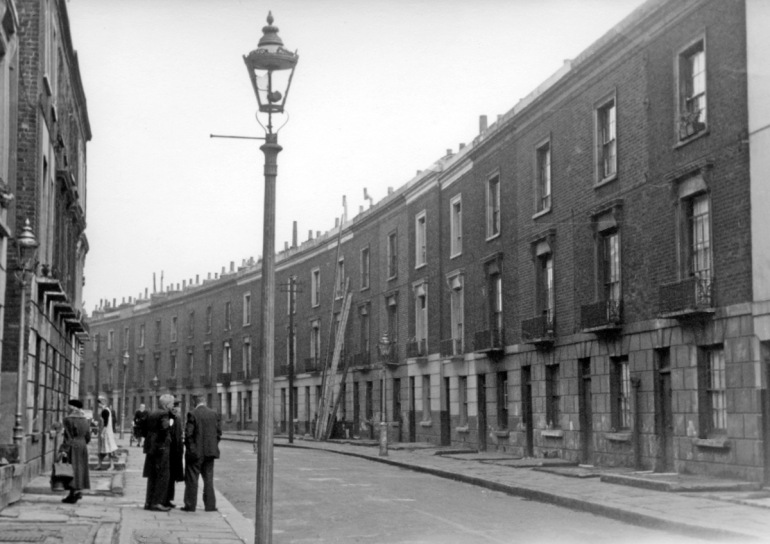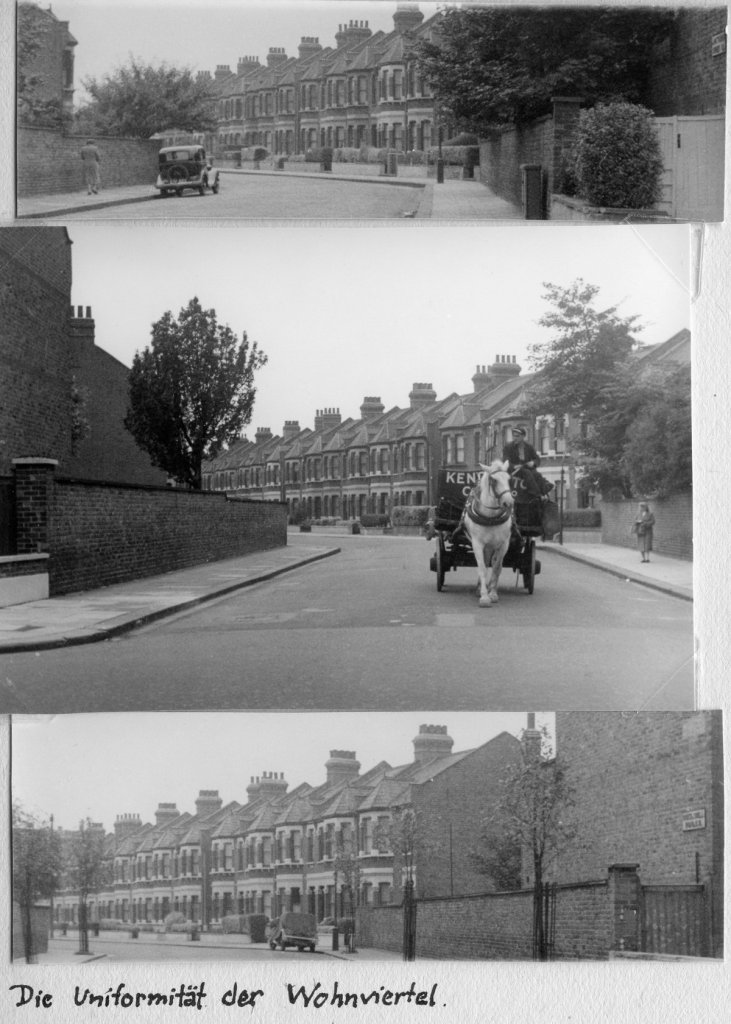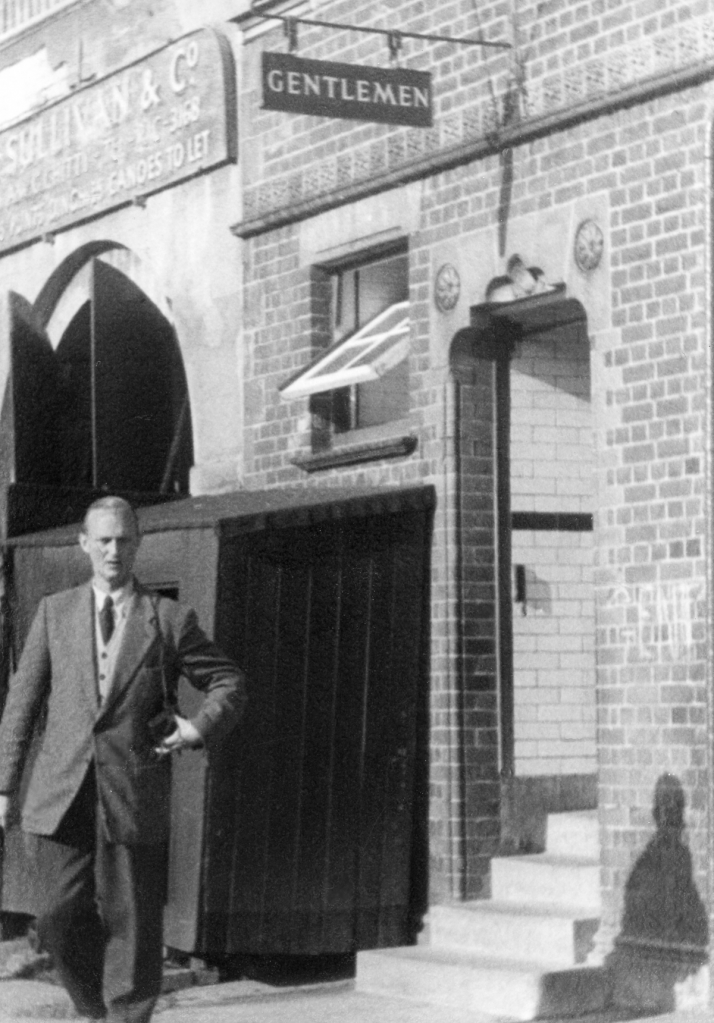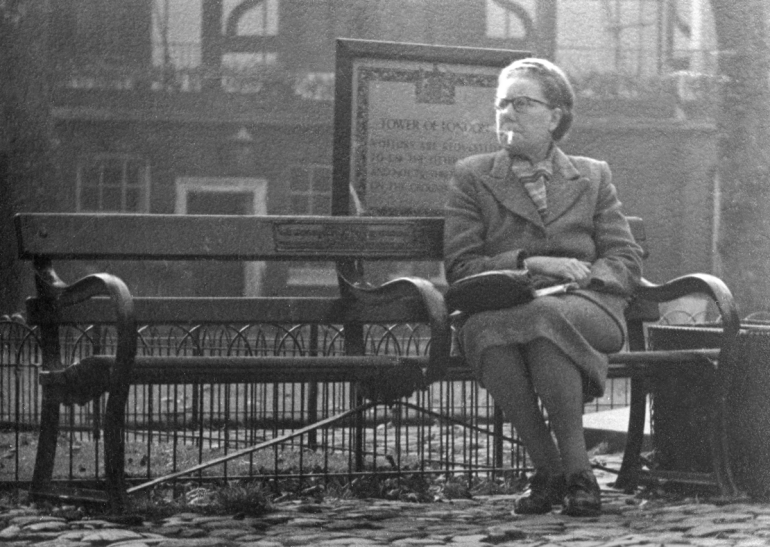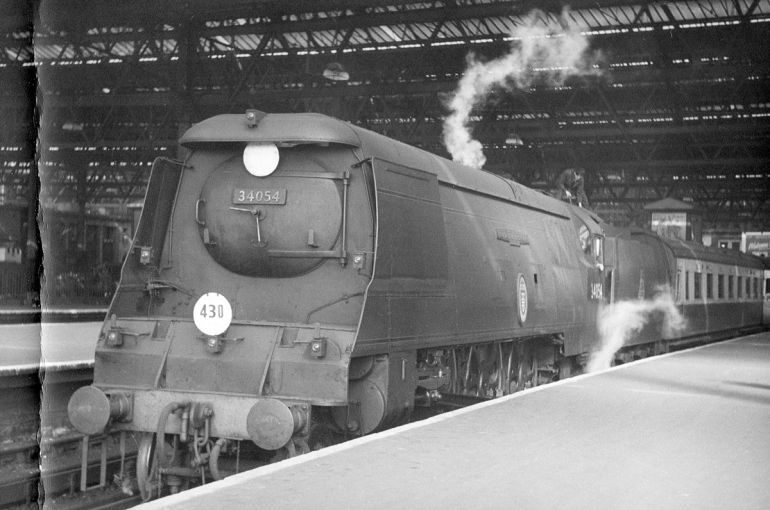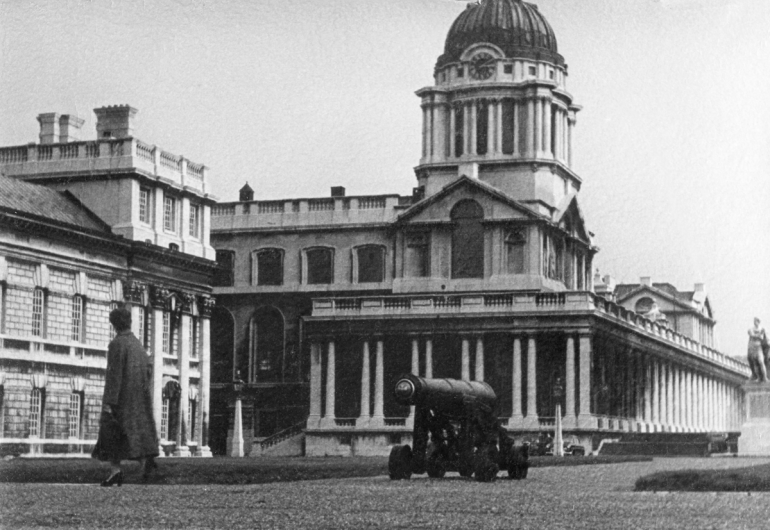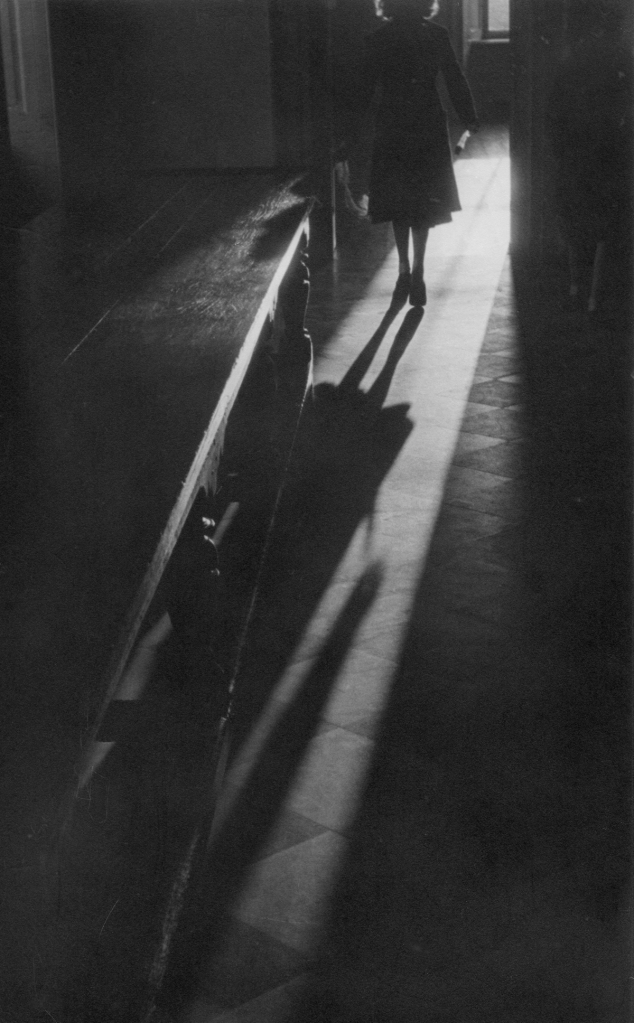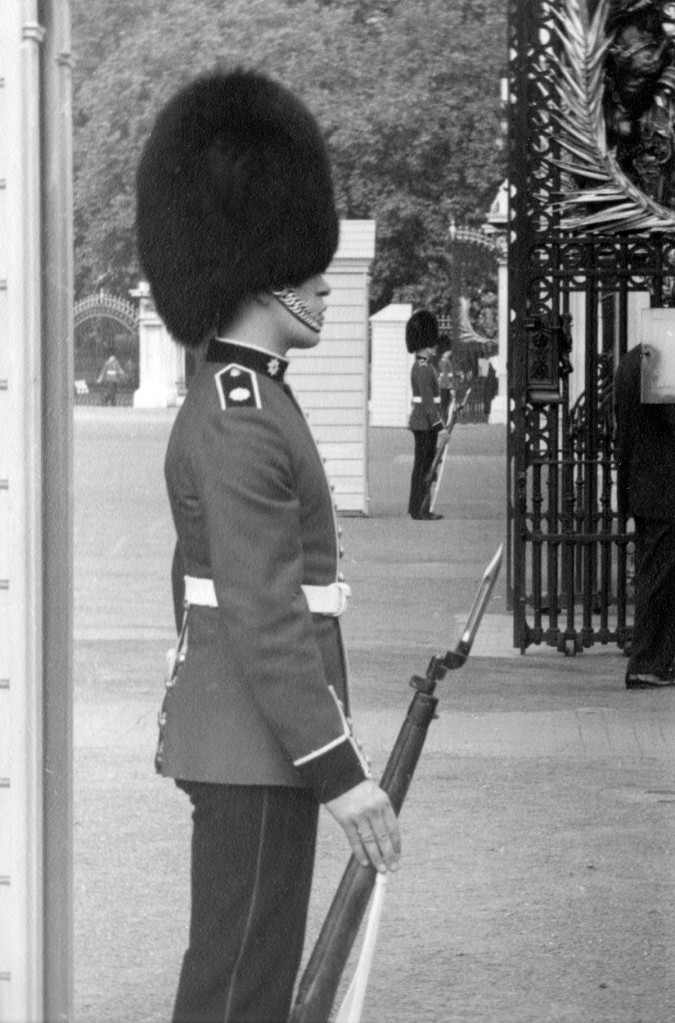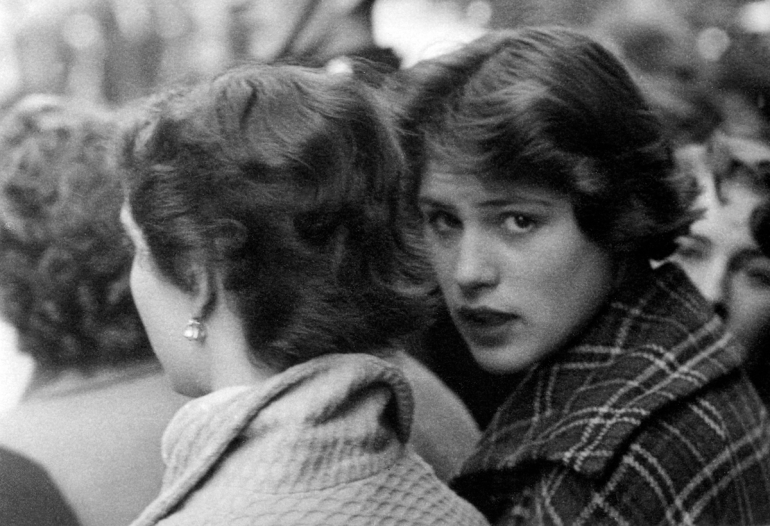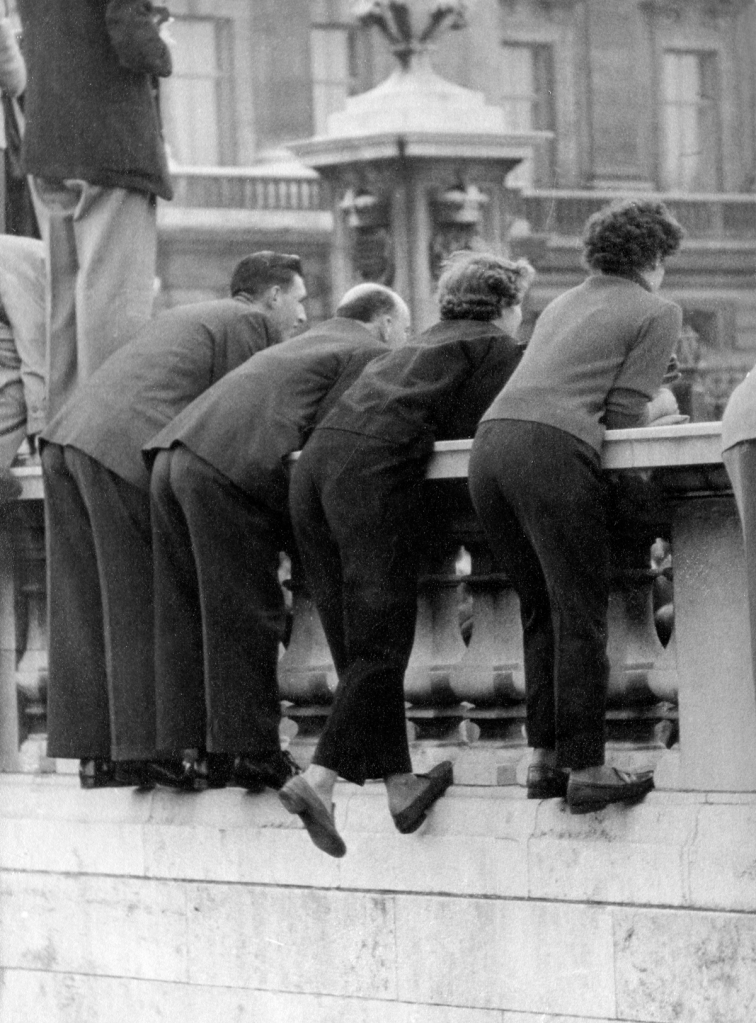

We stay in Southend.

“Pierhead mit Belustigungen.” Pierhead with amusements.


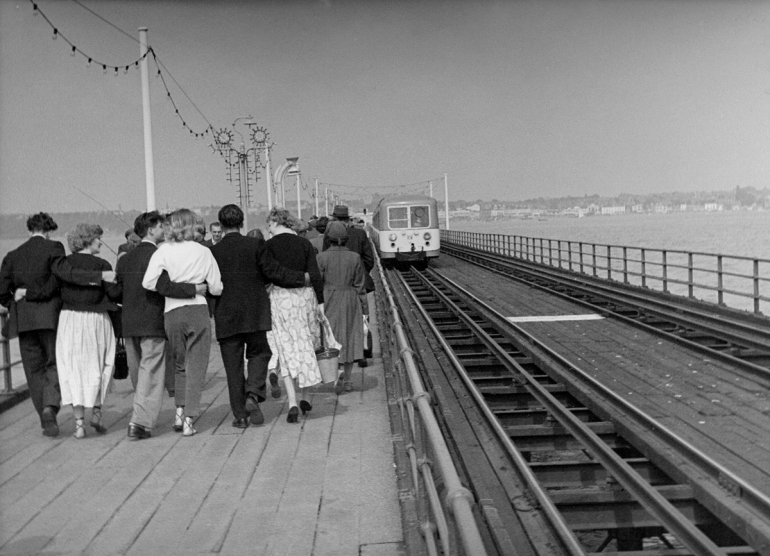
“Pier mit elektr. Bahn – Ca. 3 Km lang.” Pier with electric train. Circa 3 kilometres long.

Hans Richard has carefully cut out – from a magazine beer advertisement – a look-a-like Oliver Hardy, of Laurel & Hardy. The glass being raised is Double Diamond pale ale, part of a 1954 advertising campaign by the brewers. He reprises the tag line “A Double Diamond Works Wonders” in his spread on the state visit of Haile Selassie in Chapter 18.

“Nochbau der Golden Hind.” Replica of the Golden Hind.

“Sprich für sich, bes. rechts oben.” Speak for yourself, especially on the top right.


“Kinderspielplatz.” Childrens playground.

“Kommunisten gegen German Rearmanent.” Communists against German rearmament.

The background to the above protest was the likelihood of West Germany becoming a member of the North Atlantic Treaty Alliance (NATO). Many on the Left (including many in the Labour Party) in Britain still feared that Germany was a militaristic nation. Hans Richard is probably right to assume that the above demonstration and soap box orator are members of the British Communist Party. A clue is the ‘Ban the ‘H’ Bomb on the above display board. The Soviet Union had already exploded an atom bomb, whilst the United States had gone on also to test a Hydrogen Bomb, and had publicised the fact. The Soviet Union had tested a hydrogen bomb in August 1953, but in August 1954 had not gone public about it. The above demand for a ‘European Security Pact’ is a red herring. The Soviet Union had a worldwide Front organisation, campaigning for World Peace, whilst at the same time subjugating East German, Poland, Cechoslovakia, and Hungary. For instance, in June 1953, just over a year before Hans Richard took this photo, a strike and demonstration by construction workers in East Berlin triggered other workers throughout East Germany to protest against the regime. Usually referred to as The 1953 Uprising, it was put down by Soviet tanks and East German security forces. Estimates of those killed vary between 55 and 125. Some weeks after Hans Richard took these photos the Labour Party agreed to West German rearmament, supporting the position of the then Conservative government. On 2 October, 1954 the Federal Republic of Germany (West Germany) was admitted to NATO.

“Rearmanent-of-Soul ist niche so gefragt.” Rearmanent of the soul is not asked for.

A street entertainer, about to begin his spiel, by the looks of it. Note the double exposure on the left side of the print. This was to become a major problem for Hans Richard later in the afternoon. Also note the large ‘lollipop’ sweet the boy is holding on the right hand side. Update: The ‘Street Entertainer’ has been identified as the Rev. George Wood, known as ‘Happy Harry’.

“Happy Harry” – the Revd. George Wood. Photo circa early 1960s.
Viewer Natalie E. got in touch to say that she thought the ‘street entertainer’ was a “character known as Happy Harry, before my time, but certainly looks like the same man.” And she gave a link to Southend on Sea by Ken Crowe. Many thanks, Natalie.
“‘Happy Harry’ c1960, the Rev. George Wood began his evangelical preaching at Southend in about 1910. Crowds of holidaymakers and locals alike would stop to listen, heckle and throw pennies. He was subject to physical abuse on occasions and retired in 1966. He died aged 86, in 1974.” (Picture and info from Southend-on-Sea by Ken Crowe).

__________________________________
“Strandleben” (Durch die insular Beschränktheit hat sich manches anders entwickelt.)
“Beach Life.” (Because of insular ignorance much has developed differently.)
For once, a curious caption from Hans Richard. “Insular ignorance” works both ways. Styles of family outings to the beach differed throughout Europe, and North America in the 1950s and 60s. There is a passing similarity in some of the crowded beach scenes that Hans Richard took at Southend on Sea in 1954, with photos taken in the 1940s and 1950s at Coney Island, New York. On the German Baltic coast Hans Richard would be familiar with the Baltic coast beach chair, that has a high enclosed back to protect from wind, or sun, and is usually a two seater. And families taking trays of tea onto the beach, or children wearing cowboy hats would not be seen on the German beaches of the Baltic or the Nord See.





Mum and her family, son holding the push chair, above, and them settling down with two of his sisters below. He can be seen, partially hidden, to the left of Mum below.


The Golden Hind in the background.

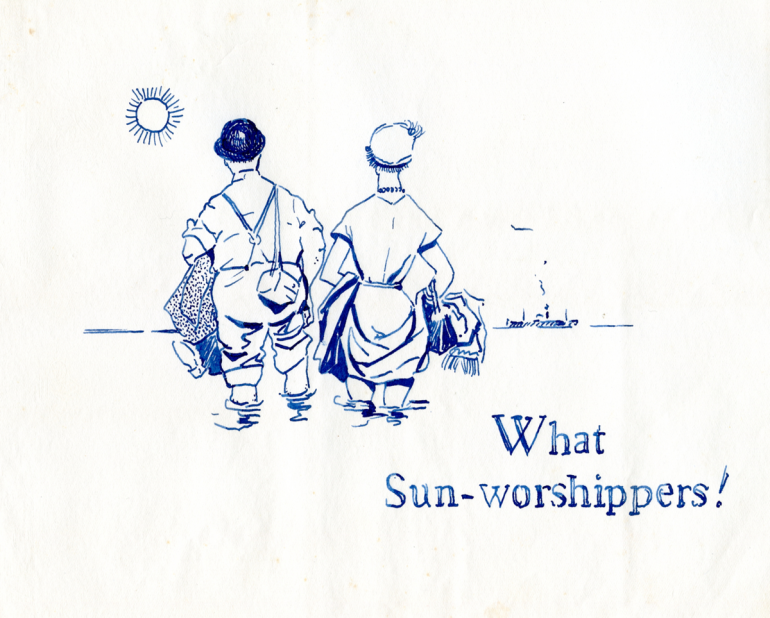
Sketch: Hans Richard Griebe. On a sheet of A4 paper, glued in by the edge, between the photos above, and those below.







______________________
“Southend Carnival Procession”



“Modell aus Lyons Corner House.” Model from Lyons Corner House.
The Southend Carnival between the 1930s and into the late 1960s was the largest and most spectacular carnival in the British Isles. London’s Notting Hill Carnival supplanted it by the late 1960s. Southend’s Carnival was so prestigious that national companies, such as Lyons, above, participated in it, besides local businesses and organisations. Very large sums were raised by the Southend Carnival which, before the war, and before the National Health Service, were given to the main Southend Hospital. In the post war 1940s money raised went to build a small estate of homes for old people in the area.
The carnival had such prestige that BBC TV beamed a live transmission into homes throughout Britain in 1951. An estimated 5 million people watched. This was when there was only one TV channel, and sales of TVs had not taken off with the future impetus of the Coronation (1953) and ITV (1955).
The “Texas Belle” features in the Hans Richard sketch below. This was possibly related to the replica Wild West train, the Kursaal Flyer that had been built in 1951 by those involved in the carnival. The Kursaal Flyer was based on a train featured in the 20th Century Fox film Ticket to Tomahawk. For several years it was a feature of the carnival, and the Gamages store, and Selfrigdes store in London loaned it, using it for publicity runs in London.

The Kursaal Flyer. Still from archive film, from Southend Calling at carnival archive.org.uk


It was at the point that Hans Richard was taking photos of the Texas Belle float that his camera packed in. “Hierbei (s.oben) streikte die Exakta” – “Here (above) the Exakta went on strike.” The last photo he glued in – above – from the carnival is double exposed on the left edge. There are also one or two partially double exposed photos that he took in London, and this is the second one from his Southend photos. The sprockted 35mm film had been occasionally slipping when advanced, and it seems the film advance mechanism has now gone completely kaput. “Why Why geschrien” he heartfully writes in his Scrapbook.

The pasted in repair receipt from Photo Sport (Marble Arch) Ltd puts the date of his visit to Southend to the weekend of 28/29 August. This was his second weekend in England. The previous weekend he had arrived in London, and on the Sunday of that weekend he had been to Hampton Court Palace.
However, it seems he returned to Southend, probably on Saturday, 25 September, 1954. He has written in his Scrapbook “Am Ende der 1 Fahrt nach war such die Exakta am End.” : “At the end of the first trip was also the end of the Exakta.” He has pasted into his Scrapbook in the Southend section of photos a sheet of various responses to the Rolls Royce announcement that it had developed a jet that took off vertically, nicknamed the “Flying Bedstead”.

There’s a sporting chance the date of the Saturday edition of the Daily Mail was the date he traveled down a second time to Southend, reading the paper on the way. Unfortunately there is no way of knowing which photographs (apart from the Southend Carnival photos) were taken on which trip, although one or two hint at different weather. But weather can be transitory, and clouds can clear, the sun come out, and coats come off.
As no photographs are designated “R” for Rolleiflex, it seems he left his second camera behind in his digs.
____________________
“Und damit Kommen endlich zum Titel dieses Abschnitts: Beauty, etc”
And finally we come to the title of this section: Beauty, etc.

“Vom Engros…”

“… zum”

“Endetail.”
“Oder: Warum immer nur die Ruckseite?”
Or: why always from behind?

“Antwort: Weil sir die Phantasie anregt*
*vgl. Tacitus: Ante Museum, Post Lyceum”
Answer: Because it stimulates the imagination.
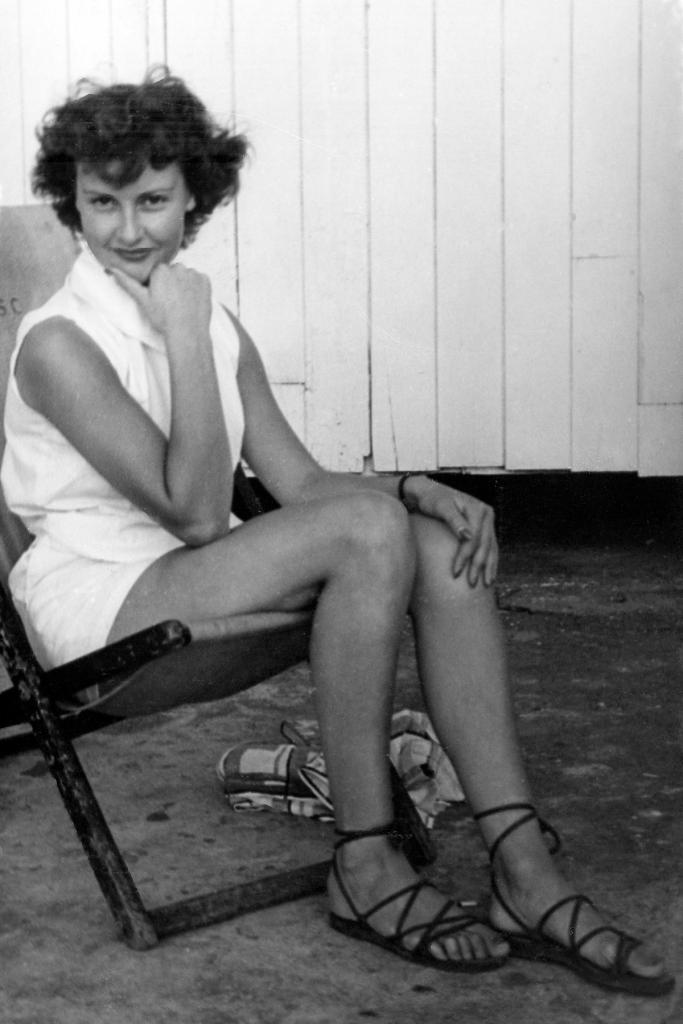
“Wendy.”
“Beauty and the Beach.”




Note the gent lower right taking a family seaside snap. Where is that photo now?

“Sichtlich co-operative.”
Visibly co-operative.

“Gewährte sie noch weitere Einblicke in ihr Innenleben, nicht ohne auf oder…
She allowed further views of her “inner life”…

… abmunternde eines sichtlich versammelten Publikums.
…neither encouraging or discouraging comments from the public who had gathered.
– Thomas Mann. Der (exakte) Zauberzwerg.”
– Thomas Mann. The (exact) Magic Dwarf.
Hans Richard is playing around with the original title of Thomas Mann’s The Magic Mountain. By substituting zw for b (Zauberberg to Zauberzwerg) he arrives at Dwarf.



“Die Rückfahrt”. The return.
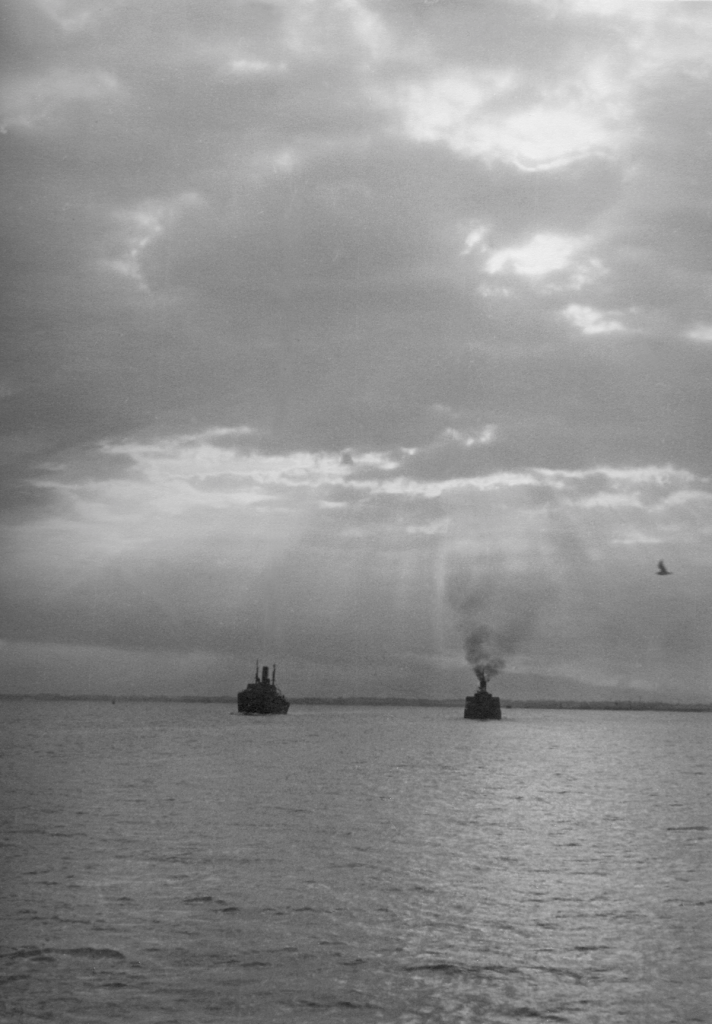
“Themsemundüng.” The mouth of the Thames.
___________________
Southend 1954 Style Notes
These caps for boys were in:


Plus Roman style sandals for women:


________________________
Next: 14. Woolwich Docks, Tilbury Docks & the P.O Liner Iberia.

_________________

